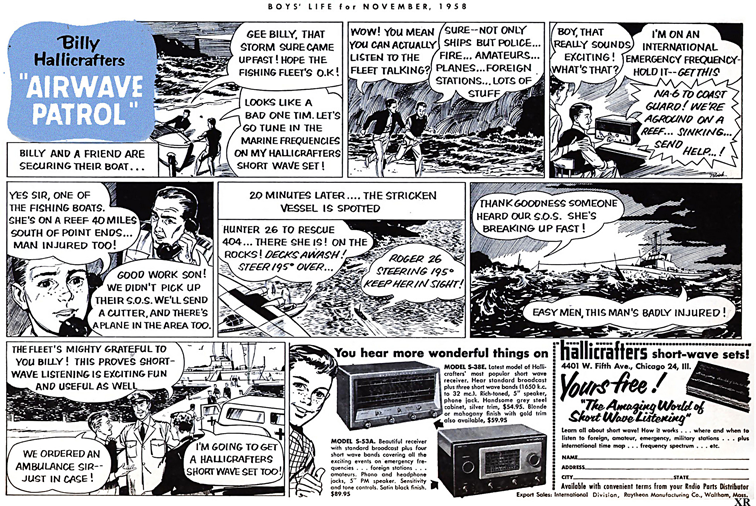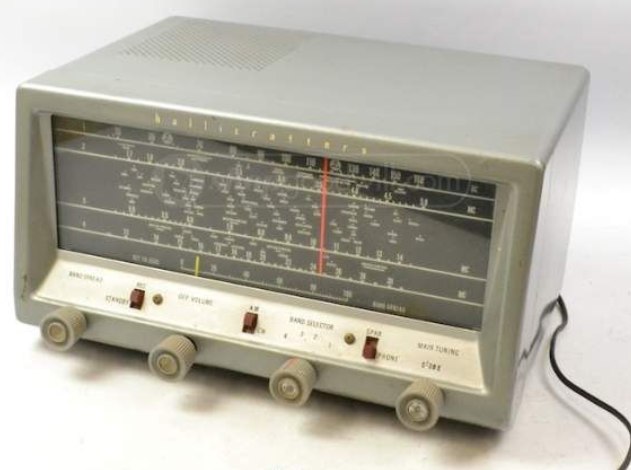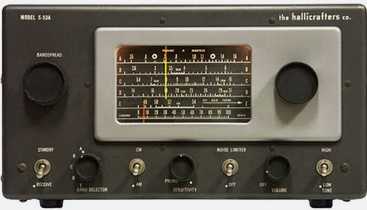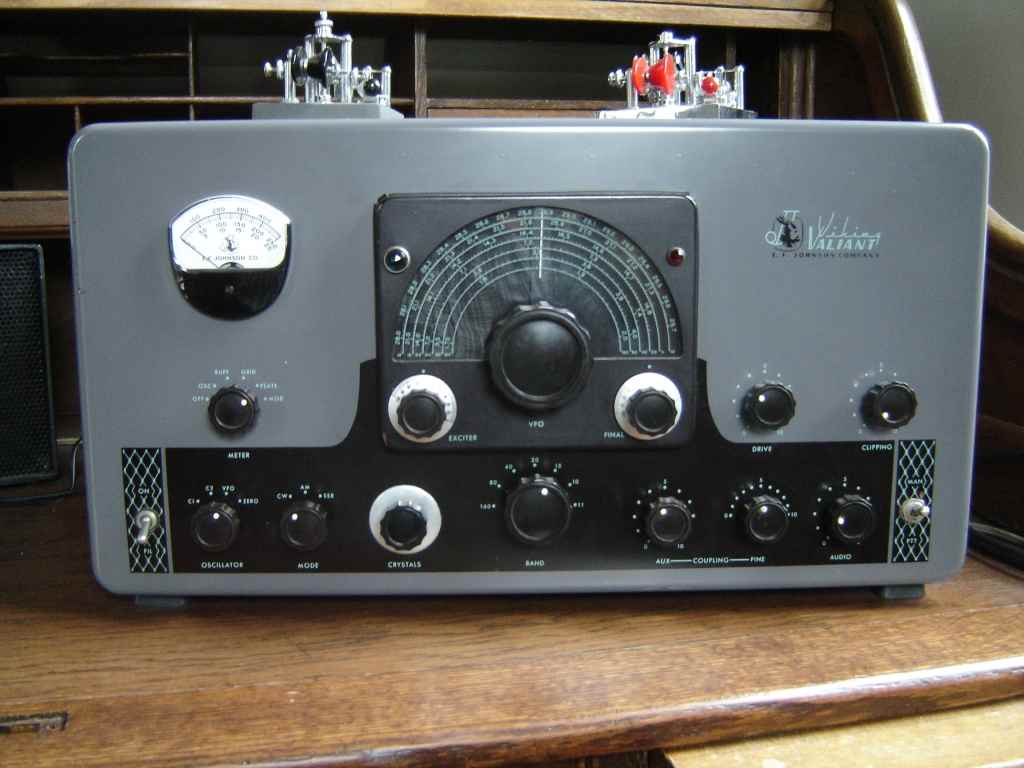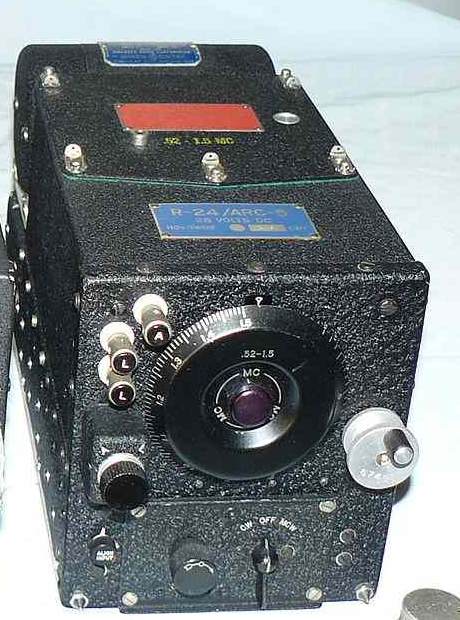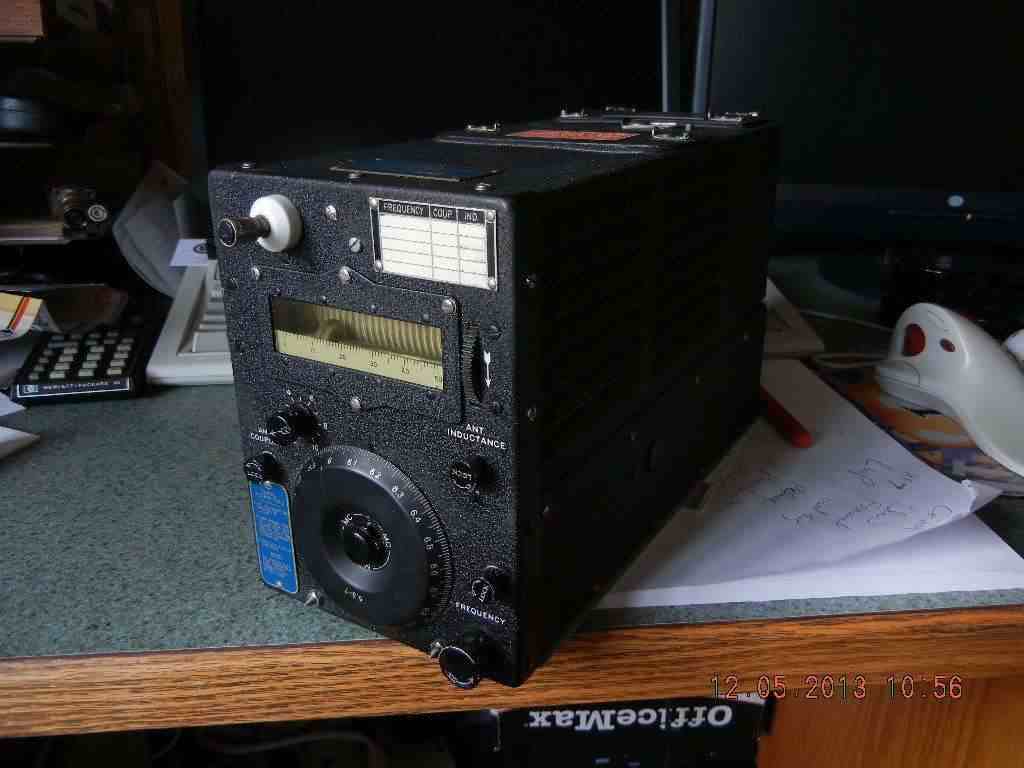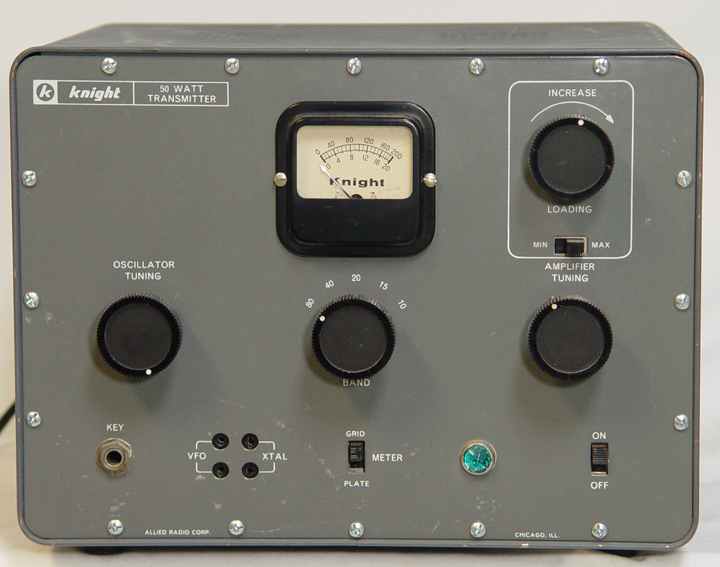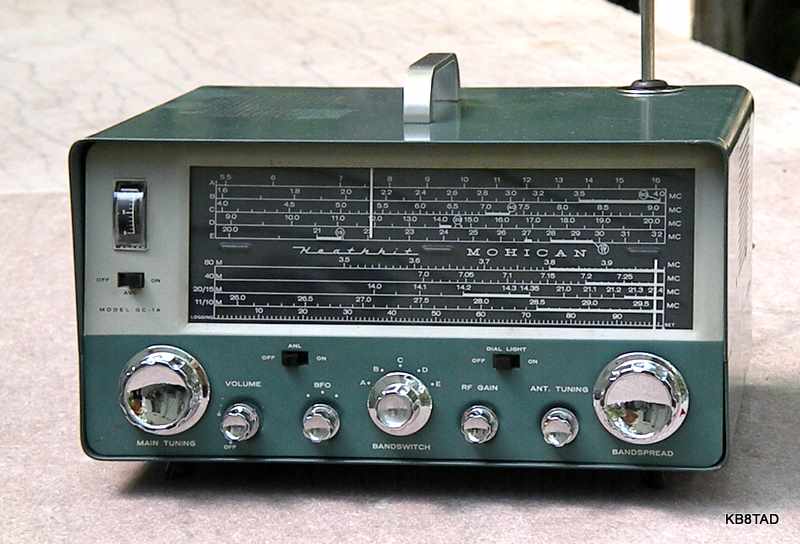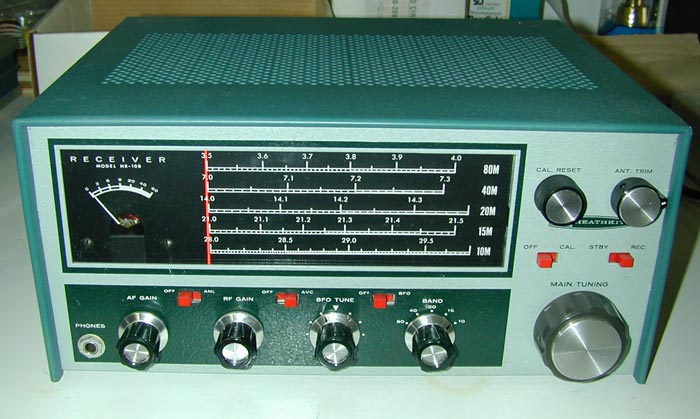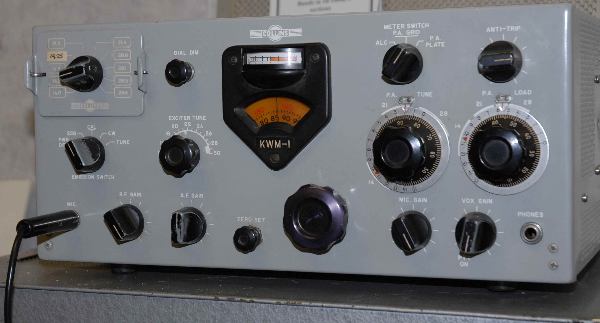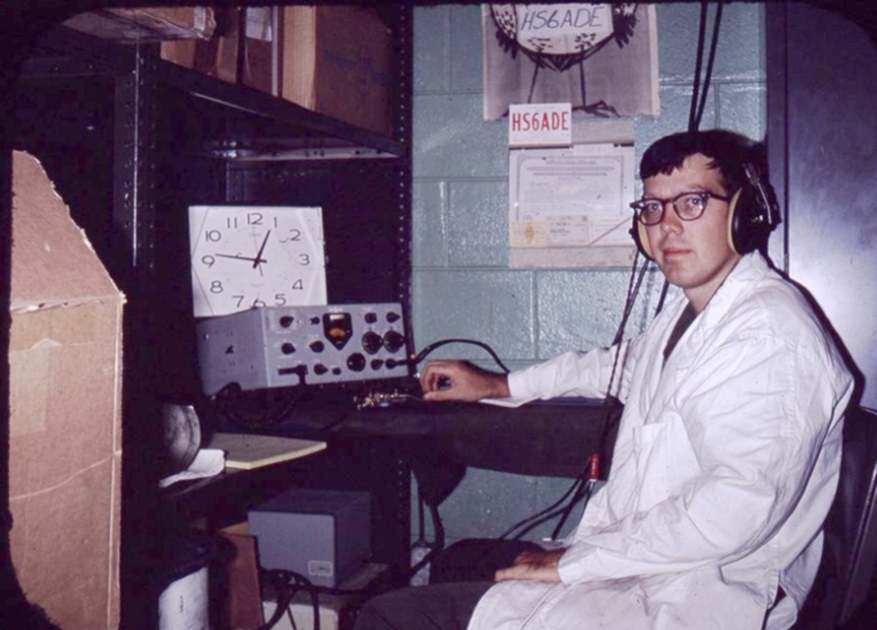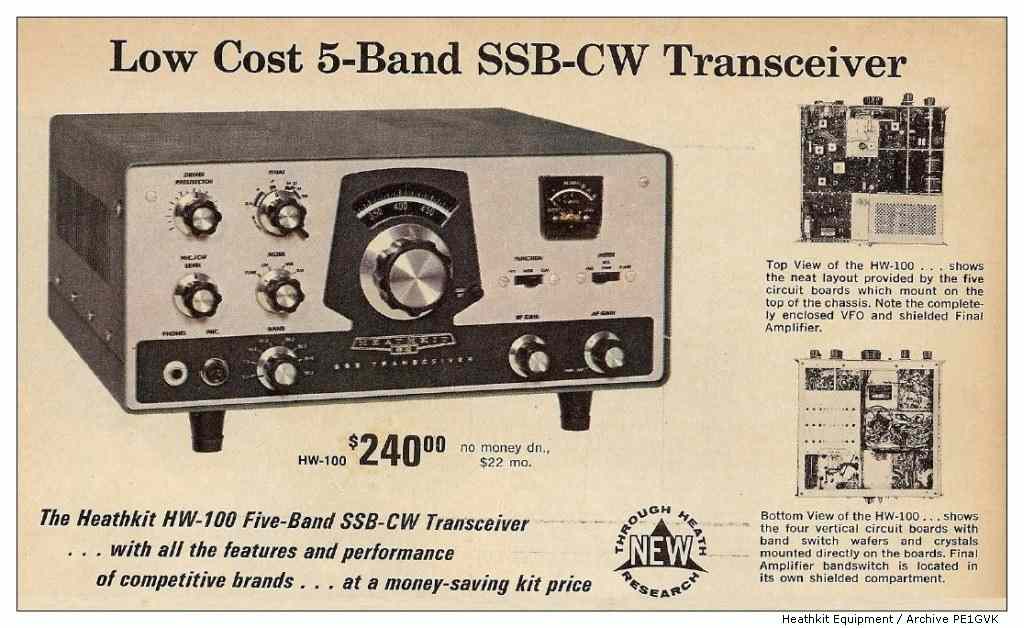| |
| |
| |
| |
Collins Radio
S-LINE With the introduction of the S/Line in 1958, Collins
moved from designing individual products that could be used
together, to ones that were designed to integrate and operate
together, in various combinations, as a system. They were the
first equipment maker to take this approach. Collins was also
the first to introduce a compact
HF Transciever, the KWM-1, in 1961. This set the stage
for the next generation of amateur (and military) HF radio
equipment.
The 75S-() receiver and 32S-() transmitter,
comprising the heart of the S/Line, operated separately or
together to transceive. IE, the receiver controlled the
transmitter.
The introduction of the Permeably Tuned
Oscillator (PTO) THE VFO, provided
dial accuracy better than 1 kHz. BASICALLY unheard of in
1962
ALL Designed to operate on all frequencies between 3.4 mHz
and 30 mHz in 200 kHz band segments (with the exception of
5.0 to 6.6 mHz,,)
Used by the military and other government agencies like the State
department in embassies around the world. The Collins radios were NOT
cheap. only the richest hams had them,
They were all
tube radios, and when Japanese radios overtook the American market
a lot of
''us" collectors could get some bargains.
Now not to confuse the issue, here's some explanation of models
the receiver the 75S-1 then S2 and S3
later S3B and S3C
they mostly all looked the same, some knobs were added to later
versions to accommodate new features.
They also had 'winged' or
'round' Collins emblems,
first two pictures below are winged,, the others
are round.
round was later production units and eventually said Collins/Rockwell
I'll put my S-Line up against any late model radio, yes no waterfall,
and lacking some features that make newer radios really nice..
Please note, there's NOT one button on these radios. HI
30L1 uses 4 811 tubes, output 600 watts

32S3 Transmitter
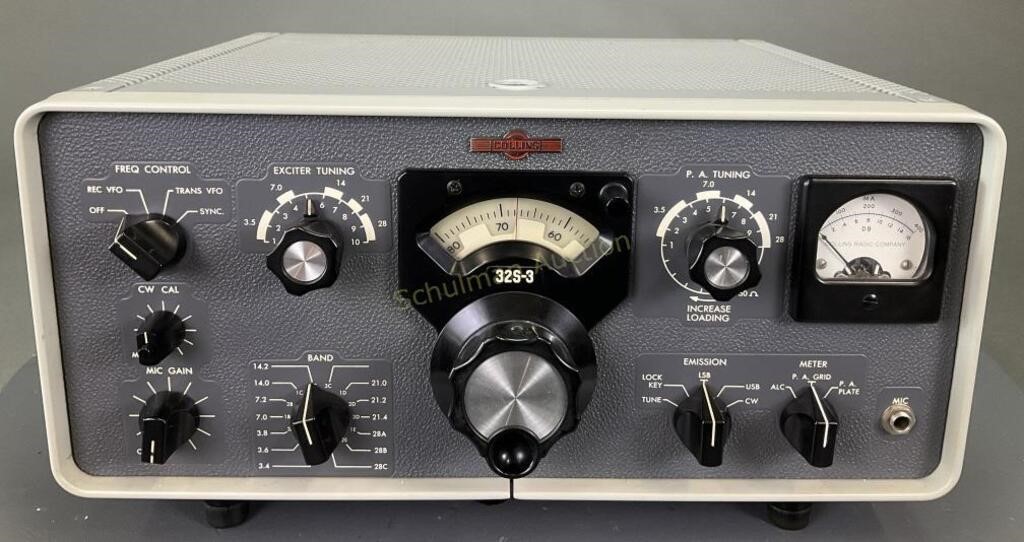
75S3B Receiver
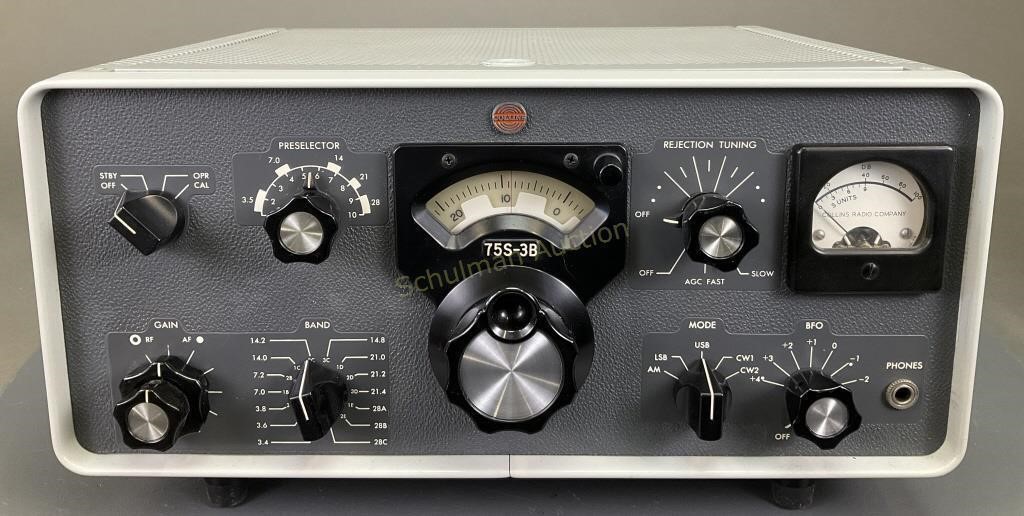
KWM-2A Transceiver
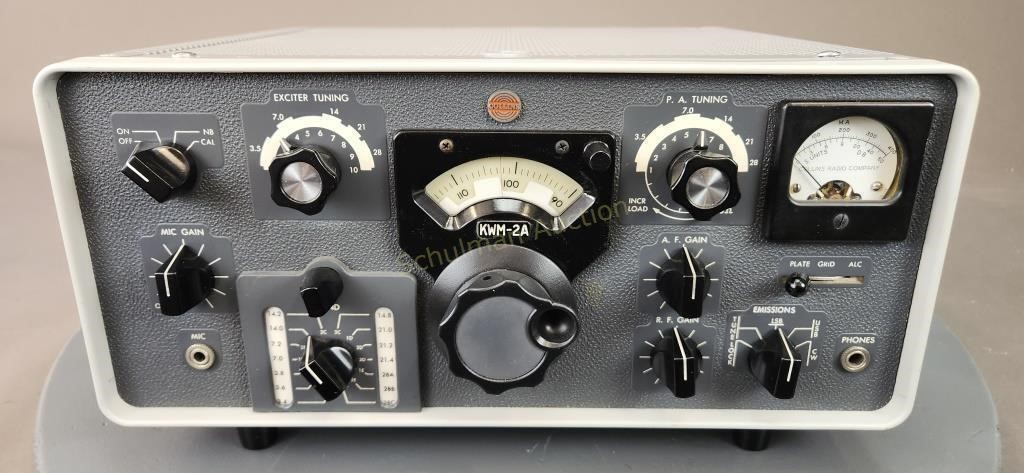
312B4 Wattmeter, speaker, phone patch (left)
312B5 Wattmeter, speaker, phone patch , external VFO for KWM-2 that
allowed split receive and
transmitter frequencies,


if your interested in learning more about the S-Line equipment line ,,
heres a link to the collins collectors club.
https://collinsradio.org/cca-collins-historical-archives/the-equipment-of-collins-radio/the-grey-boxes/
|
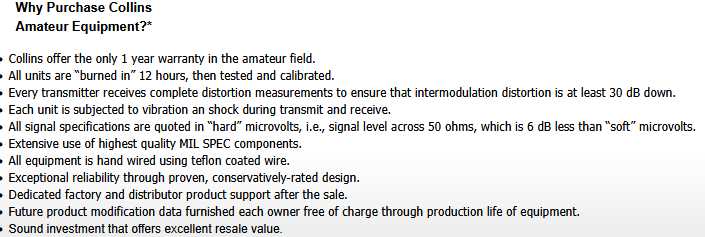
this is my (the webmasters) S-LINE .. during the
2014 W1AW operation at my house 2941 contacts were made on 15 meters, and
hundreds more in other contests
PARC W1AW
Story and pictures 2014
other PARC operations including the S-Line
Idaho Potato Contest Group -
ALL - 2009
Idaho Potato Contest Group - ALL - 2010
Idaho Potato Contest Group - ALL - 2011
Idaho Potato Contest Group - ALL - 2012
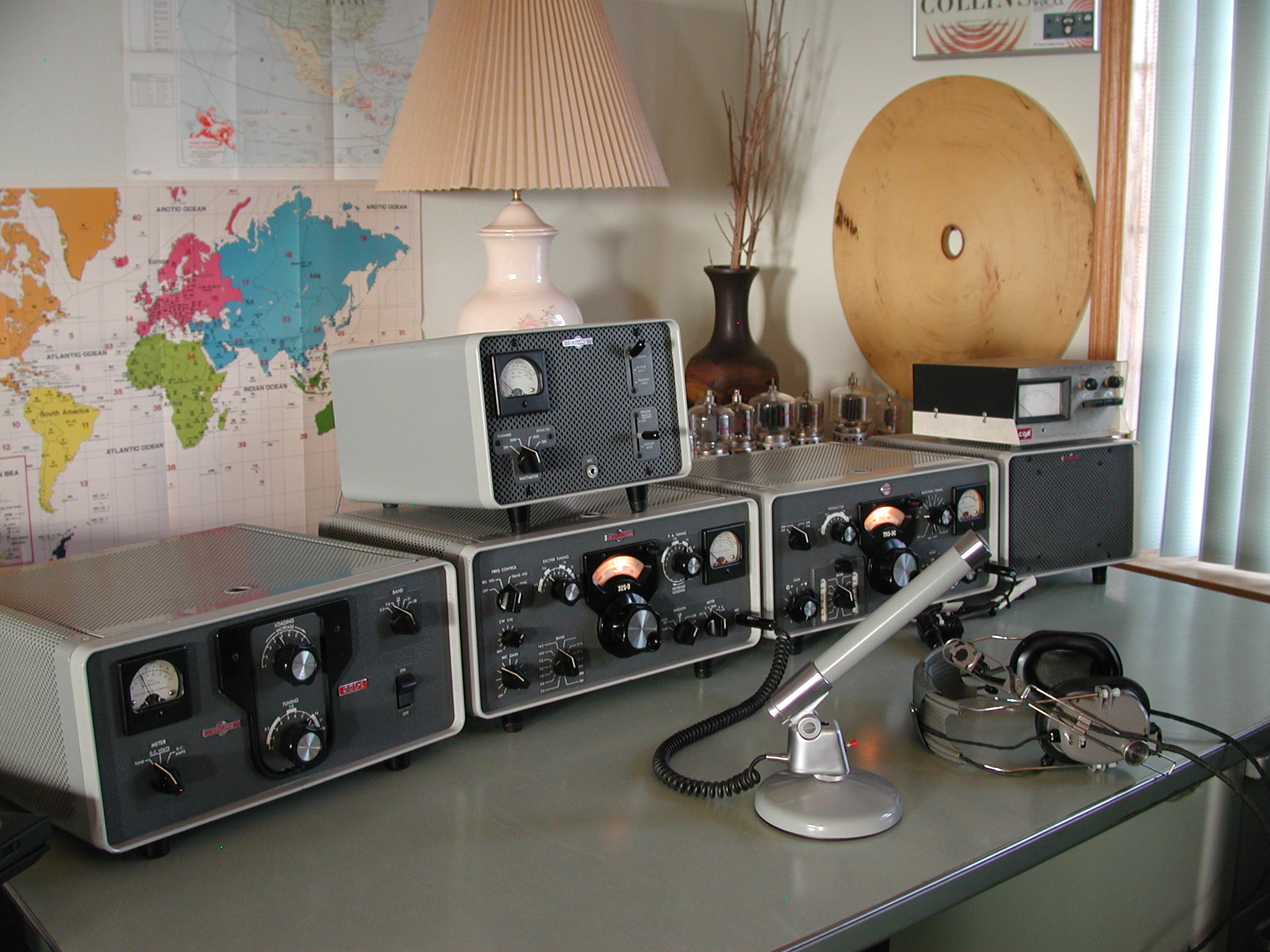 |
|
Zenith TransOceanic
spans thirty years in the life of the fabled
Zenith Trans-Oceanic, from the original 1942 "Clipper," beloved
by homesick GIs in World War II, through the classic '600 models of the
50s and 60s, up to the
last transistorized Trans-Oceanic, model R7000-2 in 1981.
When the last Tube Trans-Oceanic rolled off the
assembly line in 1963,
It was the last TUBE type portable radio made in the US.
Zenith did continue production of the solid state Trans-Oceanics in the
United States
until 1979. The last two years of production, Zenith shipped parts for
the R7000
solid state Trans-Oceanic to Taiwan for assembly. 1981 was the last year
of
production for the Zenith Trans-Oceanic.
 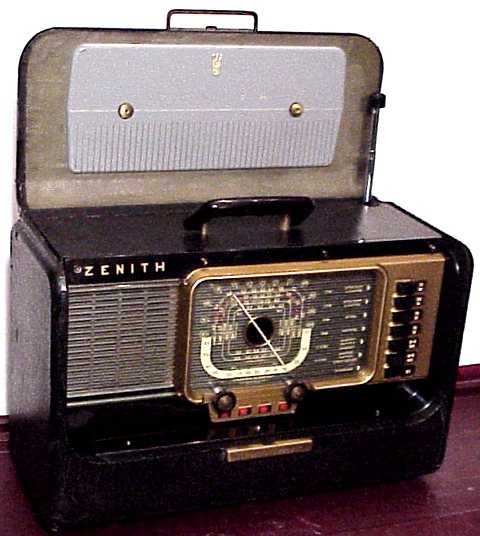 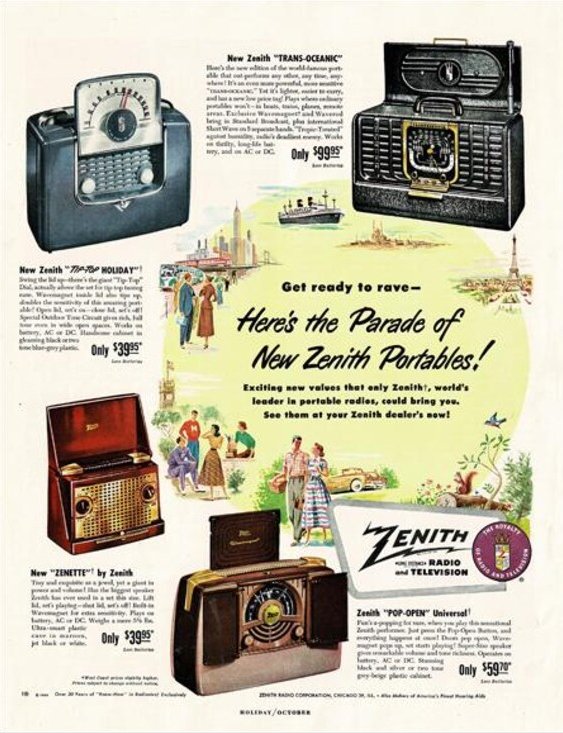 |
| |
from the 1937 QST, wow $129
it actually comes complete with the tubes
many radios in this 1937 QST are sold without tubes ??
strange at best..
now in 2024 dollars this would be $ 2805. 08
just think, what you get in 2024 for $3k
mind numbing

|
| |
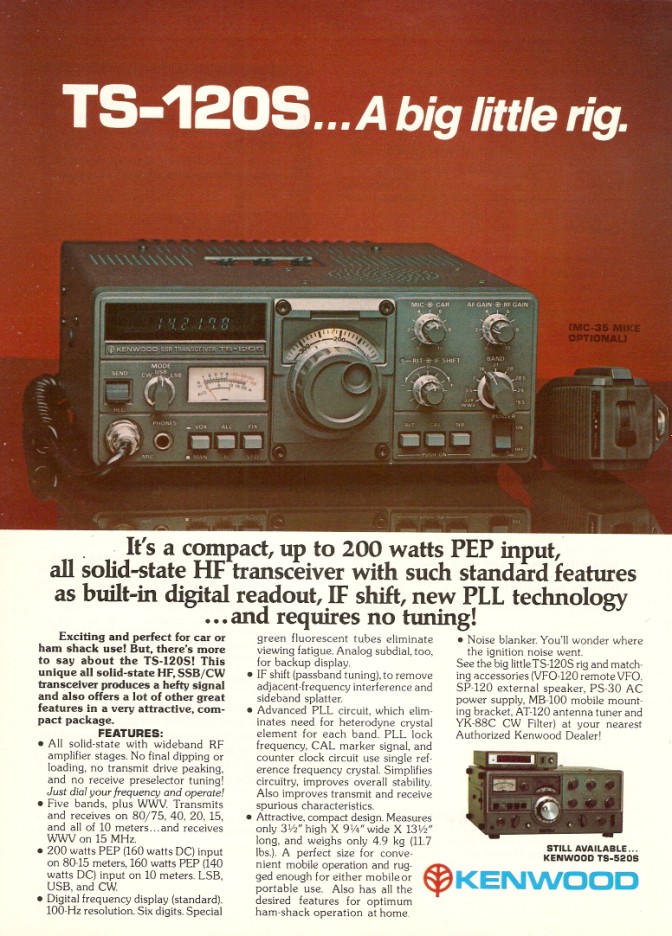 |
| |
 |
| |
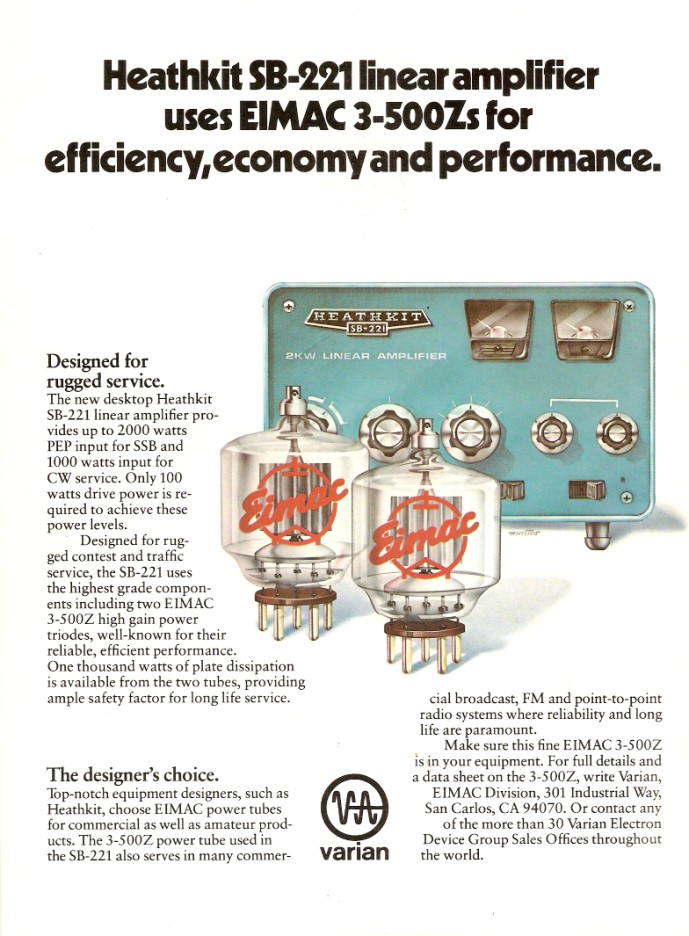 |
| |
 |
| |
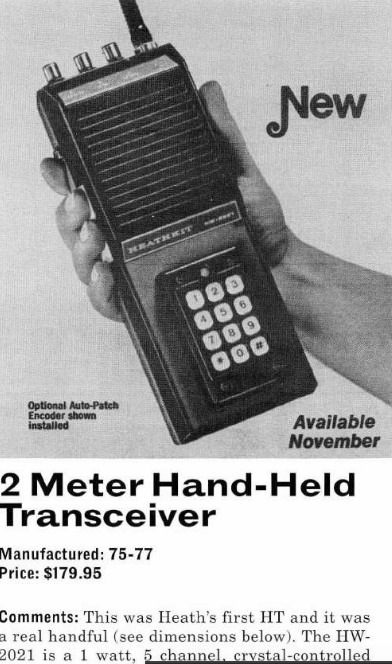 |
| |
 |
| |
AN/ARC-5, WW2, used as primary radios in most fighter aircraft like
the corsair's, P51's However, almost every aircraft in the inventory
had these as backup systems.
These and the matching transmitters, did the job, there had to be
millions made, because every HAM in the 1950's -60's had at
least one.
The
receivers used a flexible cable, like an old speedometer
cable for remote tuning from the cockpit,
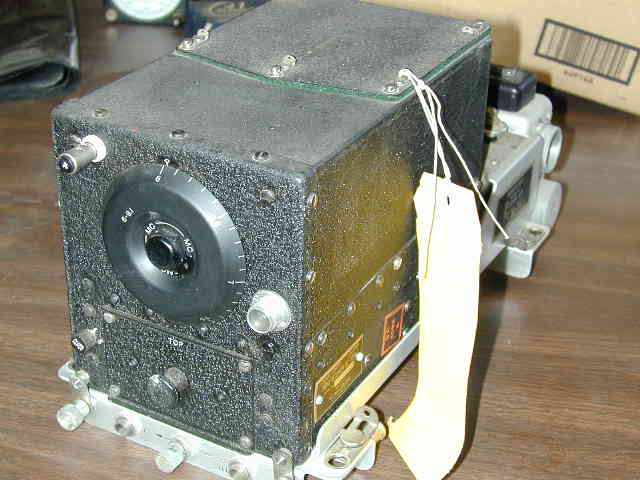
the transmitters were set to frequency before a mission. Non
tunable by the pilot's they put out about
30 watts, using two military (1625 tubes) an 807 tube for
civilians..
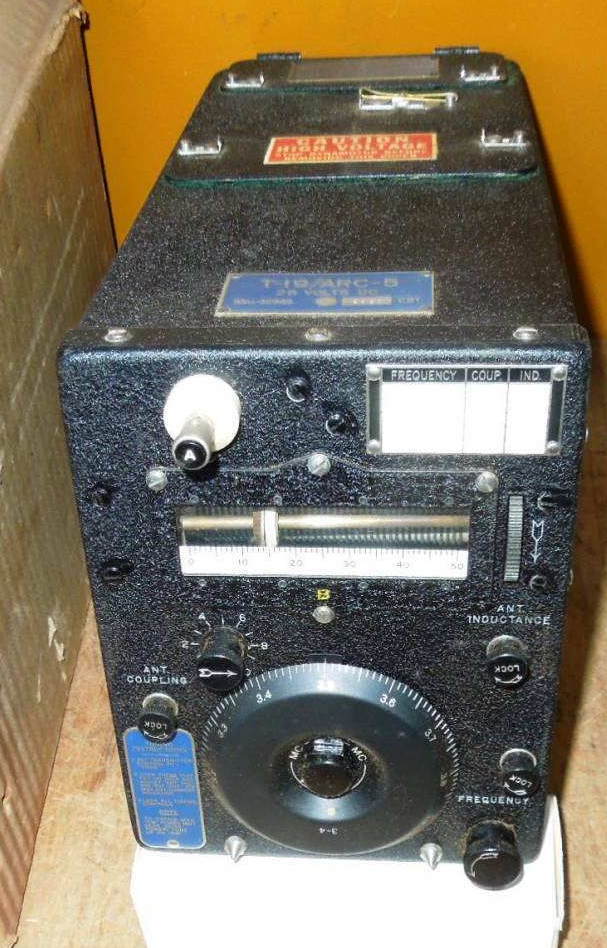
What a find, ?? These were actually my elmers
collection, in Kansas, I sold them on ebay for big bucks..
I wish I had a garage full of these !!
 |
| |
 |
| |
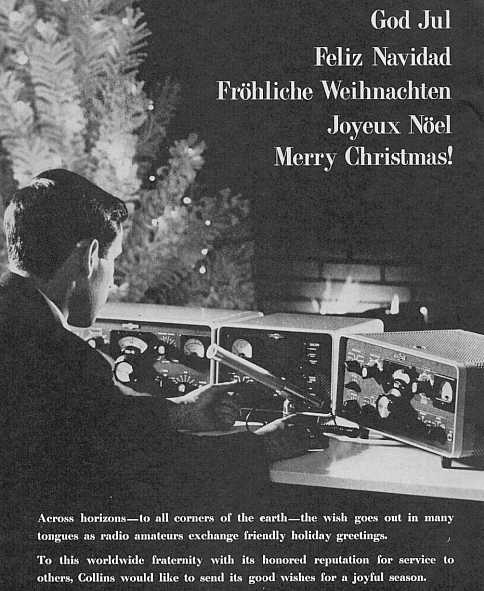 |
| |
 |
| |
Hallicrafters,, radios young ham's dreamed of in
the 1960's
In the 1930s, the shortwave radio craze was just beginning to
sweep the nation, and Hallicrafters
radios began to boom from coast to coast and around the world! Until the 1980s,
this Chicago-based
firm aimed for the average consumer, and produced high quality radios on the
cutting edge of
technology, all reasonably priced. Today, collectors of electronics are
fascinated by these pieces of
radio history, most of which can be restored to their original working
condition.
Introduced in 1946 ... $47 was a pile
of cash,
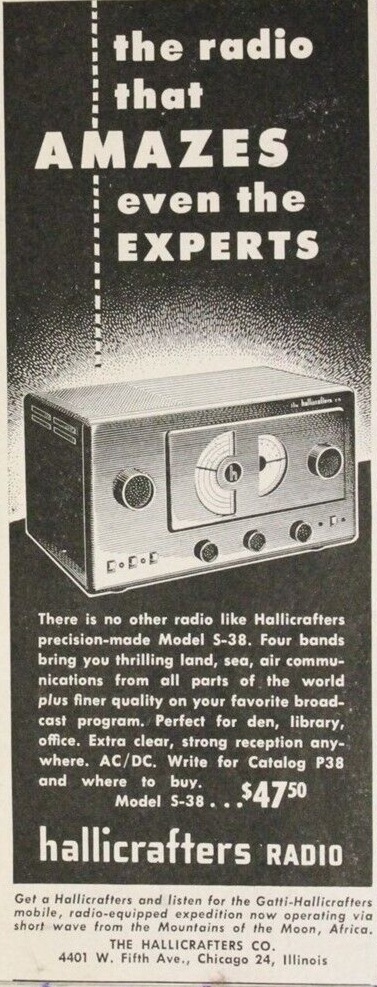
The S-38 introduced 1946
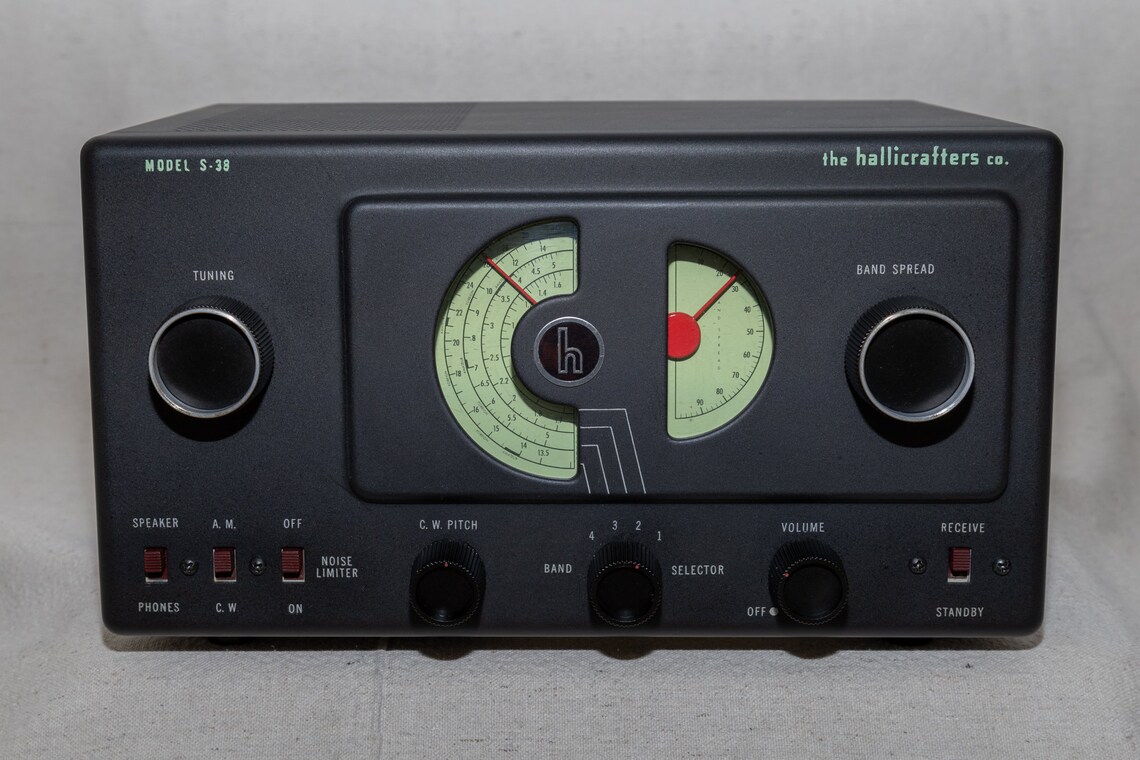
S-38A looks like the S-38,, I wonder
if they improved any of the circuits ??
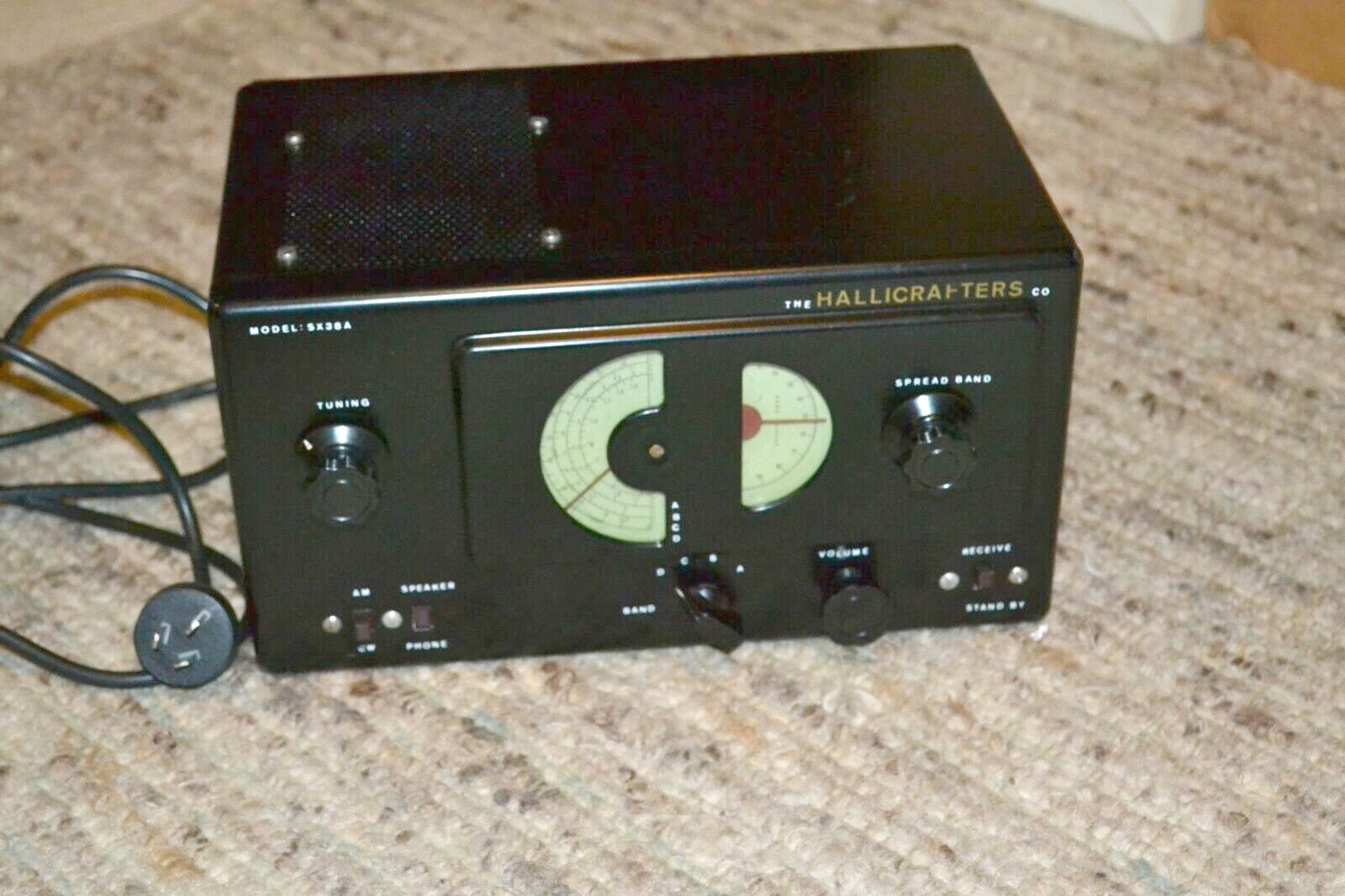 S-38B looks like the predecessor , I
wonder if they improved any of the circuits ??
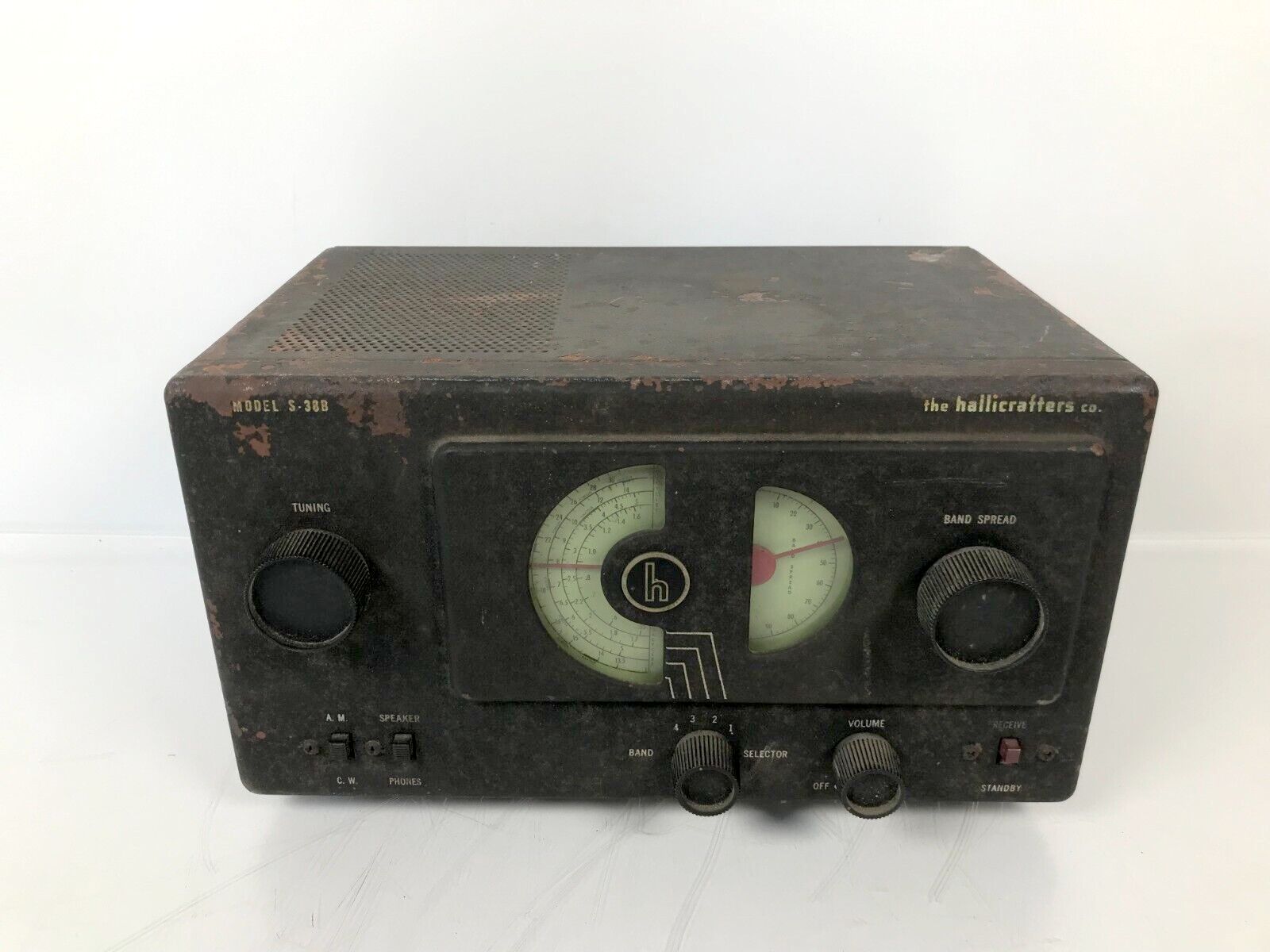
S-38c looks like the predecessor , a
more modern paint job..
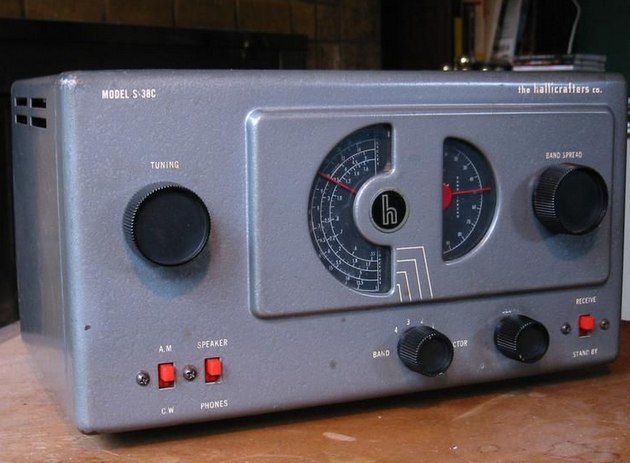
S-38D Hey a new dial, a new look
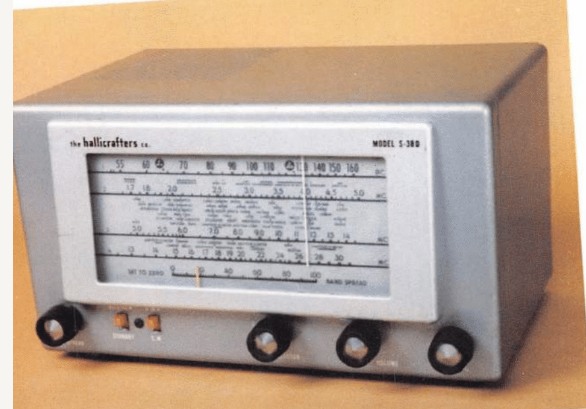
S-38 E last produced in 1961
cost $60 ...
Last of the 38 line
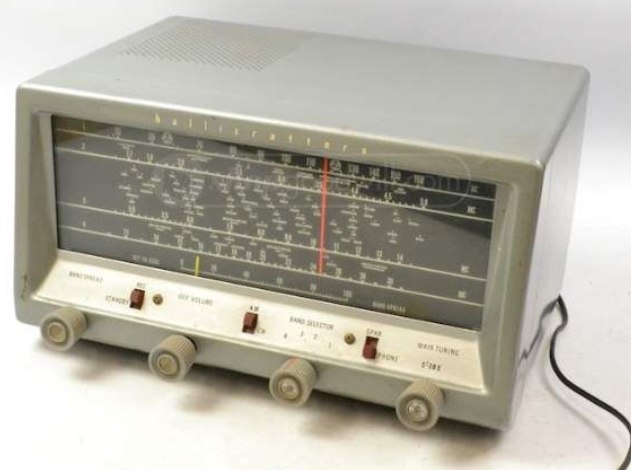 |
| |
 |
| |
Yaesu
equipment was first imported into the US
by Spectronics, Inc. located in California in 1965. Yaesu became an
important presence in the U.S. amateur radio market . In addition,
transceivers were OEM'd to Henry Radio in Los Angeles.
click picture for a more readable view
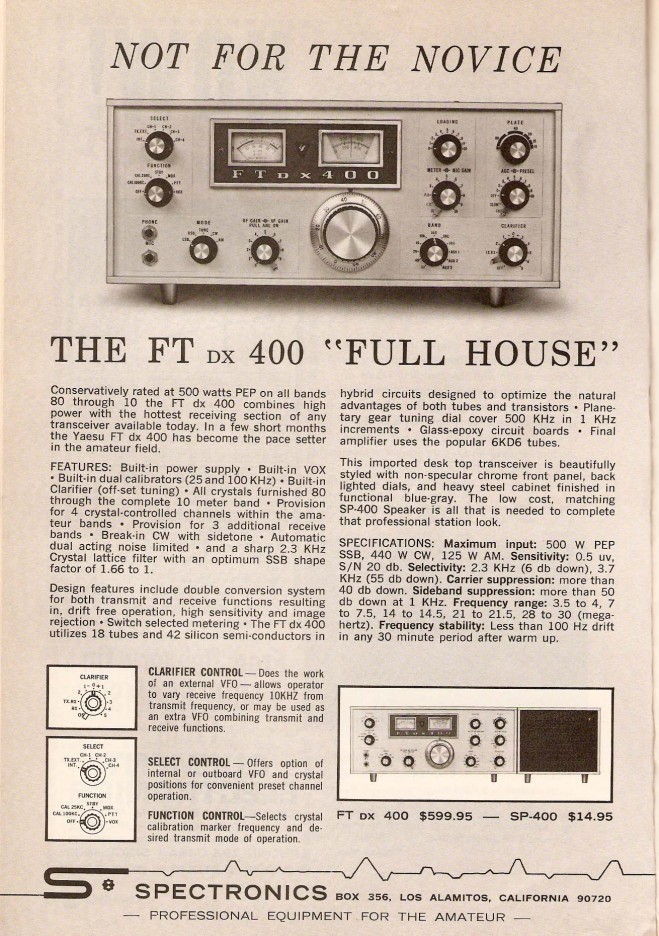 |
| |
 |
|
|
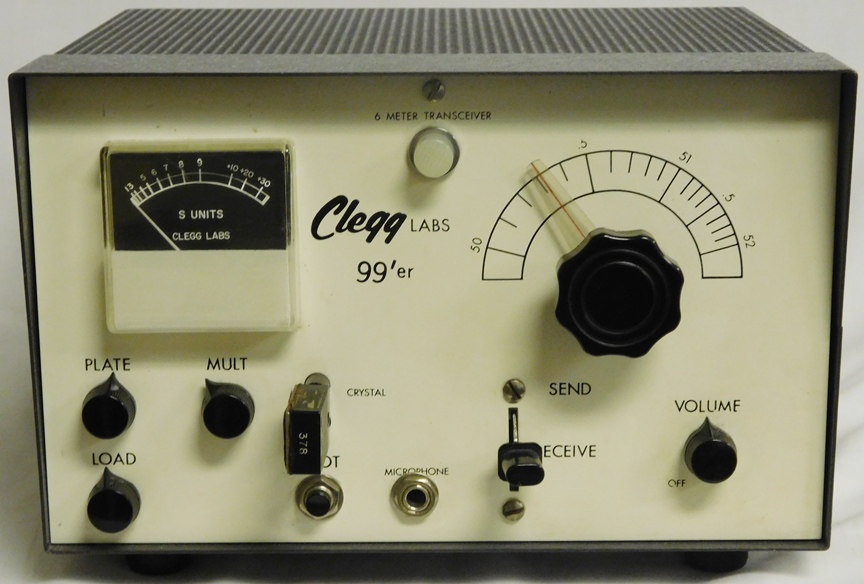
One of our club members used one of these,,, he says
5 watts out and not too good of
receiver, Circa 1962 +/- ,,, BUT
, it was way better than the HeathKit 6er..
he used a Carbon Microphone,, NO PTT.. How did we
survive ???
This was a Classic high range radio,,, and you know it looked
pretty too.
|
| |
 |
| |
WOW,
introducing a radio that you didn't need a computer to program,
and/or a PhD to understand ??
how can that be?? The Icom IC-2AT, Full of
Features, but didn't have any menus to confuse the issue.. It
had a very unique memory system, very easy to program to your
local repeater !! or simplex
Introduced in 1979 it cost $230 today thats $947
Thats not 9 dollars and forty seven
cents ,,
Now how to program the memory: first dial the frequency into
the thumb wheel switches, second select the offset, and press
the PTT switch and you
"up and running" until you decide to QSY to some other frequency.
A very cleaver idea.. Icom say's they sold over 500,000 of these
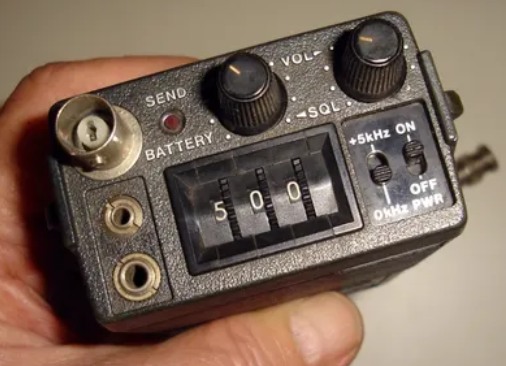 |
| |
 |
|
|
Here’s another one for the Blast
from the Past (or a “one-hit-wonder”).
This was brand new in 1959.
Look at the asking price back then (ouch).
$1550... you could buy most cars for that ? Today
$15,644, good luck
getting a car for that now..
It is a 4 band rig with dual
conversion RX. First I.F. was 2.2 – 2.8 Mcs
(tunable) and second I.F was 455 Kcs.
It was a COMPLETE station,
Receiver, Transmitter and a 1kw amp. The
power supply was in a separate cabinet you could set on the floor
(There was also a Cosmophone 35
that was less rare and less expensive.)
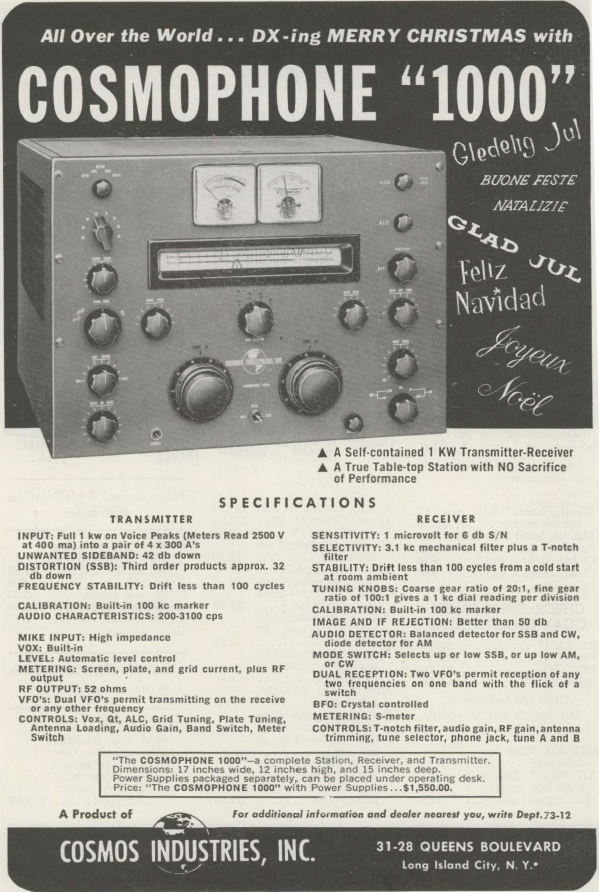 |
| |
 |
|
|
National NCX-3
Modes:
SSB/AM/CW
Bands: 80, 40, 20 Meters Only 3 bands
Input Power: 200W PEP-SSB, 100W-AM, 180W-CW
Filter: Crystal
Receiver Incremental Tuning (RIT): No
Noise Blanker: No
VOX: Yes
Power Supply: Separate AC & DC Supplies
Final Tube(s): 2ea. 6GJ5
Price/Year: $369/1963
, 2022 $3,490 power supply was extra
Size: 6.0"h x 13.75"w x 11.75"d
Approx. Weight: 22 lbs
When I was first a ham, the radio club I belonged to bought
one of these for the club shack at the Red Cross Building,
Mission, KS
|
|
|
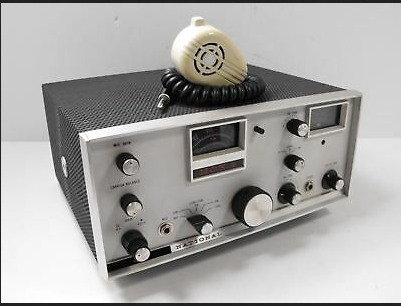 |
| |
 |
| |
Not exactly sure when this radio came out, however the ad below says
to get a free 1966 catalog.. So I know this was from 1966 ,
price today $3616... and thats just the radio no power supply, the
ac supply was $700, ..
Leo Meyerson , owner of World Radio Labs, in Council Bluffs,
IA.
Leo was a much like person, I've been told that when WRL was still
in operation, Leo had
free coffee and donuts on Saturday morning at his show room.
Webmaster comment:
I meet him
at aksarben radio club meetings in Omaha in 1977.. my
boss and dozens of hams from
Omaha partook of the free coffee.. HI HI
(free is good)
FYI: aksarben, is Nebraska spelled backwards, a
very large ham club in Omaha.
A good friend of mine (W6ZSL) ran one of these mobile out at Edwards AFB in
1970's
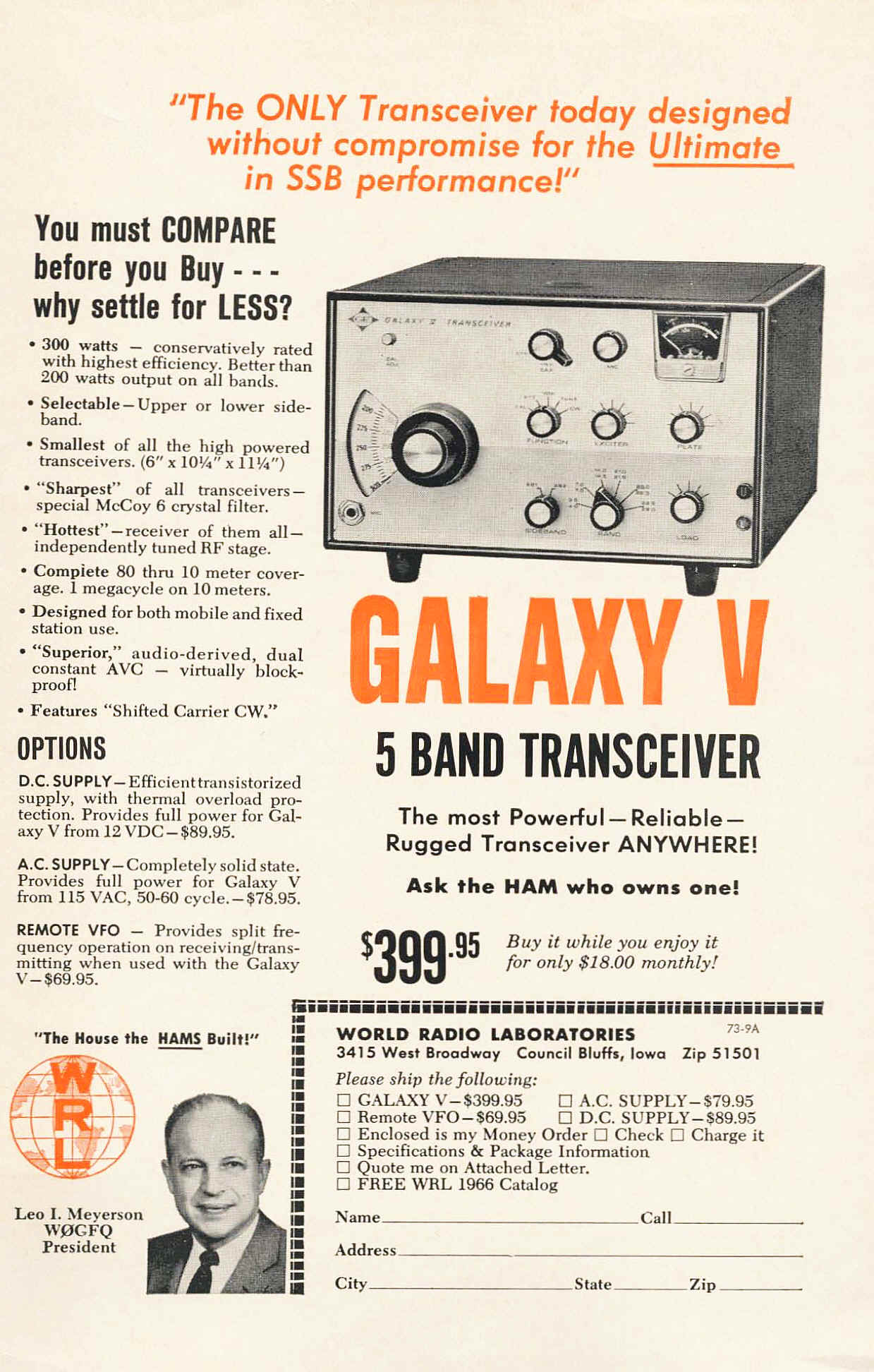
|
|
| |
 |
| |
The Gonset Communicator was a series of vacuum tube VHF
AM radio transceivers
that were widely sold in the 1950s and early 60s. The radios could operate
from
110 volt AC , or 6 or 12 volt DC from a car battery. The receiver was
manually
tuned over the unit's frequency range with an analog dial, while the
transmitter frequency
was controlled by a crystal.. The civil defense model was painted yellow
with CD insignia,
and was available for the 6 and 2
meter bands. Most folks had several crystals,
you would call CQ then tune around searching for someone answering
you,
mostly you were NOT on the Same Frequency..
First picture: Communicator model 1
The early model had a Magic Eye tube used to tune the transmitter to
max power
Now are you sitting down, in 1952 these sold for $190,
TODAY thats $2008,
YES
$2000, not $20..
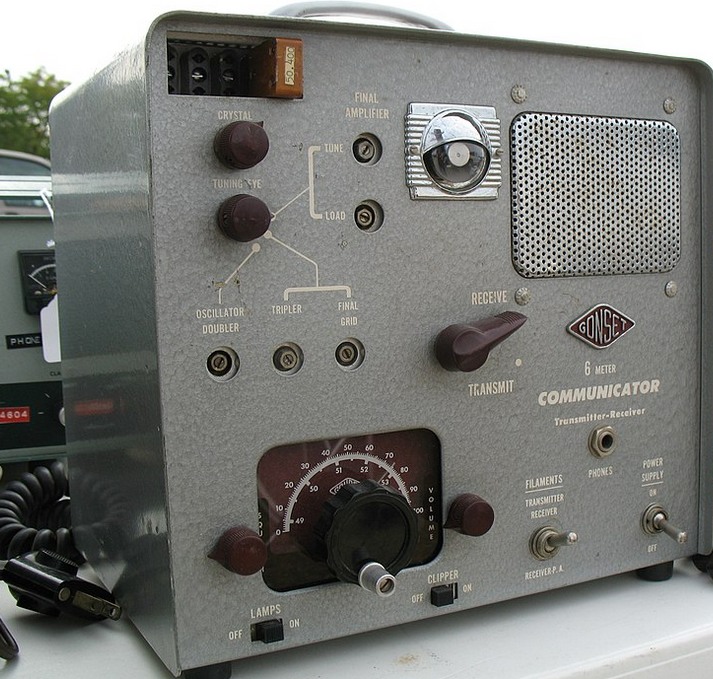
Communicator model 2 (slightly different)
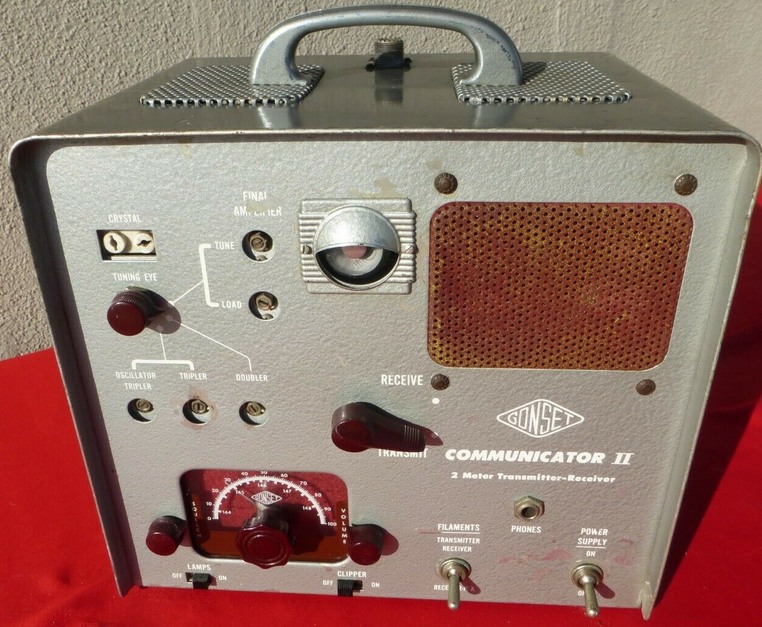
The Communicator III cost back then $270, I'm
not sure what year ""back then"" was?
it had a squelch, but NO push to talk ,,,
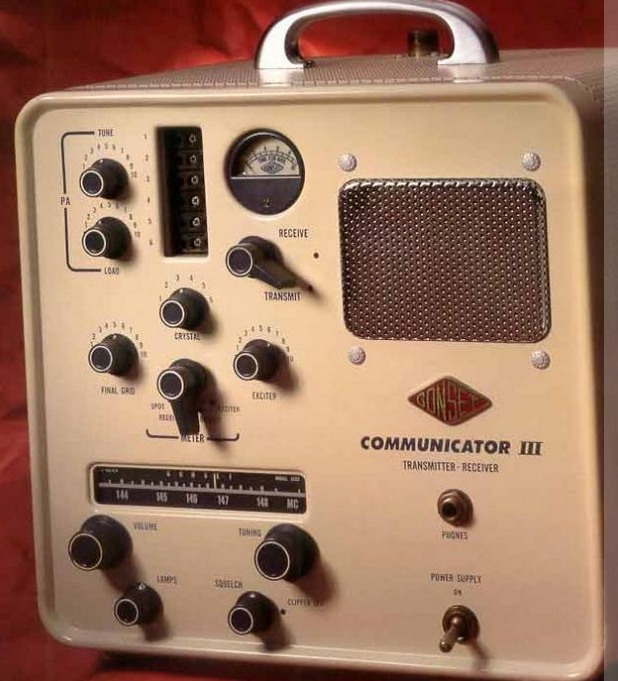
CD colors' Comm 3

And heres the LAST of the line (below) , the communicator 4,
cost today $3400
OUCH,,
but hey,,, it had a push to talk on the microphone, still used
Crystals for the transmitter . about 10 watts out, AC DC
supply built in, ALL TUBES.. THESE were AM,
No repeaters. introduced 1962,
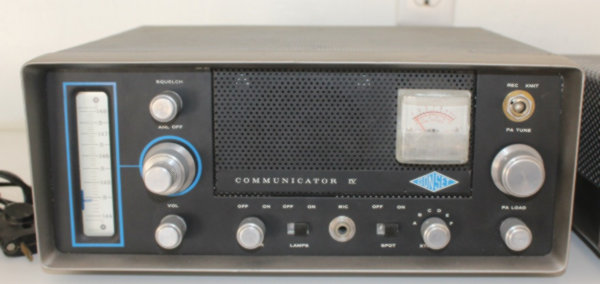 |
| |
 |
| |
Here's one of the first portable 2 meter rigs, it could run Battery
Powered !
1 watt of FM this ad is from about 1980 Today's
price $359
6 channels , Crystal controlled.. This
came with three sets of crystals for 3 channels, I
presume your choice ?? There were repeaters by 1980,
which greatly improved the
range of this low power radio, every time you wanted to
add a repeater or simplex channel
it cost about $10 a channel,,

|
| |
 |
| |
Last week was the Benton Harbor Lunch Box radios, from
Heathkit
now For those rich hams ?? HI back in the day as
in 1965
The basic radio came with ONE crystal, the VFO as shown in the
picture was $20 (today almost $179) The radio WITHOUT a
microphone was $200 (that's $1787.. today)
This was a vast improvement over the Heathkit TWOER (last week),
but only a dream for most
hams. This was a superheterodyne receiver, (no squelch) and
the TX put out maybe 10 watts. AM, it weighed 18 lbs.. there were NO
repeaters, you needed a good OUTSIDE antenna if you planed to talk
to anyone or be ready for emergencies .. Hallifcrafters SR-42A
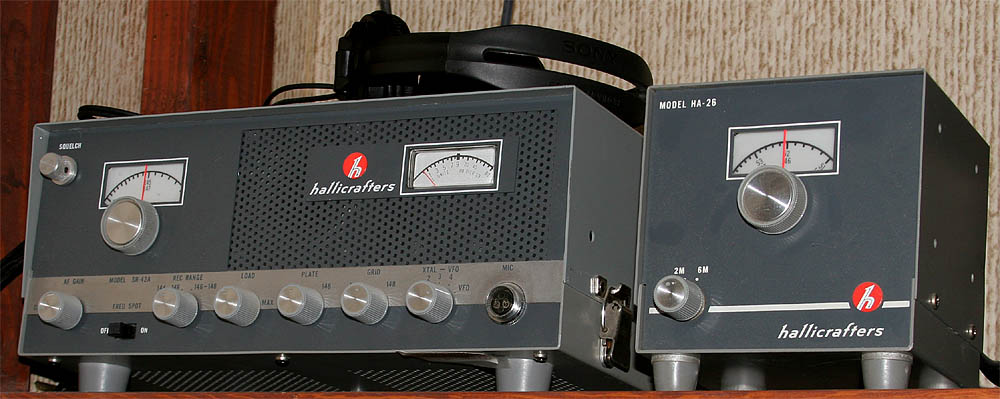
Want to know more ..
link TO SR-42 specs
|
| |
 |
|
|
Benton Harbor Lunch Box
This is the six meter radio , the 2 meter one looked
just like this, as well as the 10 meter unit and the CB unit (11
meter).. they were regeneration receivers and if you had it
on,, it HISSED all the time, No Squelch.. they was ONE channel
transmit (crystal) , maybe 3 or 4 watts out. No Push to talk, WELL
yes it was Push to talk , BUT
you had to pushed the lever down to talk.
Cost in my day "say" 1965 was $39.95 today thats $357
OUCH,
and a DC supply was another $9
and shocking it was sold as a kit, with American made parts..
By the way, there were NO HT radios, or repeaters in the 60's
NO repeaters !! ouch,, yes you need an outside antenna if you wanted
to do any
meaningful communications, yes
OUTSIDE,.... THIS still holds true today,,,
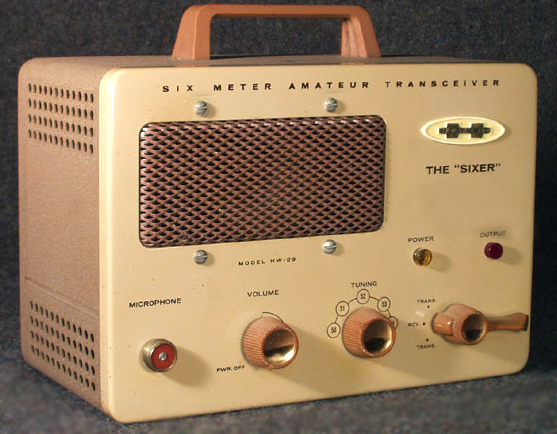 |













